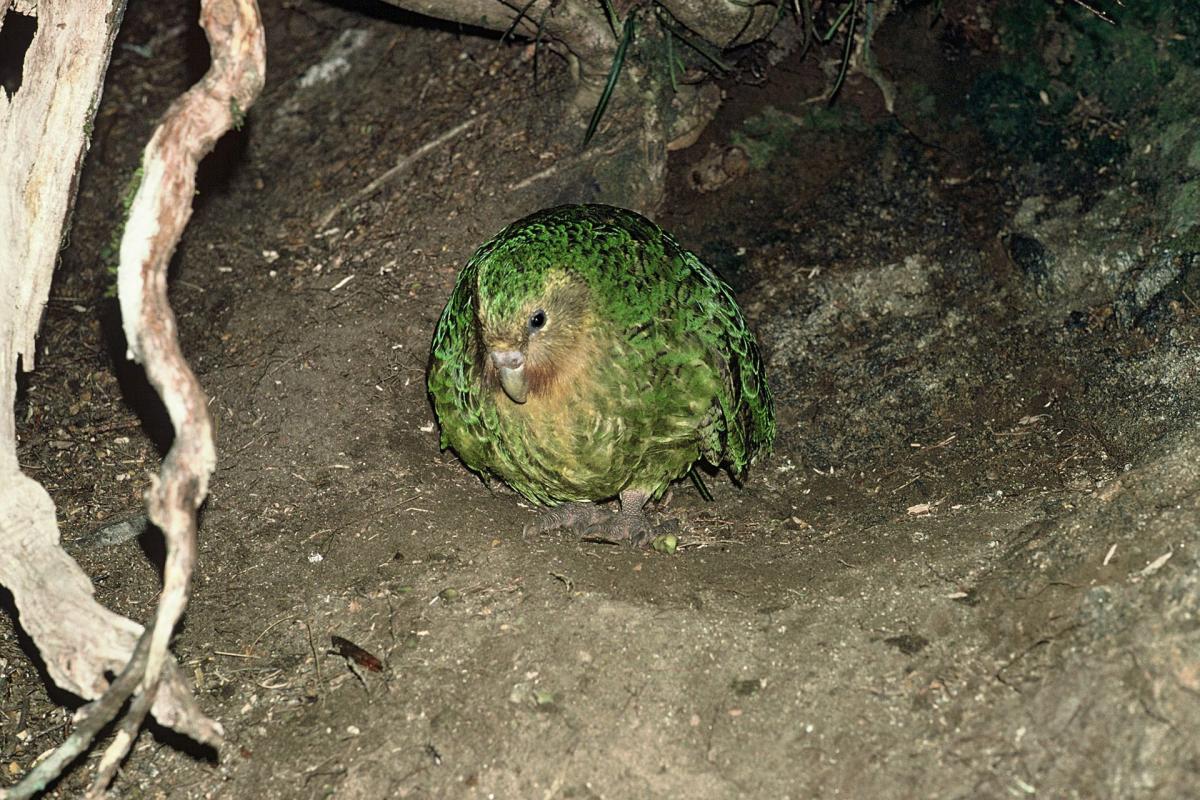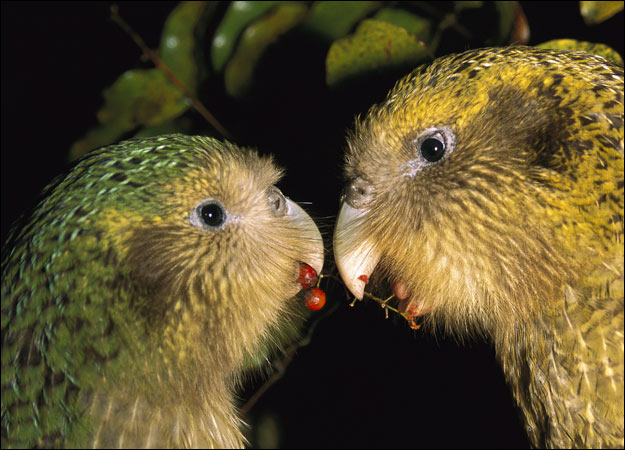What sounds like a cell phone vibrating in “mute” mode, can call a girlfriend over from several kilometers away with no cell reception whatsoever, and is possibly our longest-lived egg-laying feathered friend? The Kakapo, of course! This flightless New Zealand bird is the heaviest parrot in the world and can live to be 120 years old. It used to have few natural predators, but when the humans moved in, along with their dogs and cats and rats, the Kakapo population went into a tail spin. 
When the population of this rare bird plummeted to about 60 birds remaining in the 1990’s, scientists flew into action. Rats and cats were not interested in helping the effort to save the Kakapo and instead continued to kill and eat the young chicks. The scientists decided that the Kakapos needed to move to a safer neighborhood and so several birds were moved to three different islands where the rats and cats were not allowed to settle, even if they managed to show valid passports.
Once the Kakapos were protected, coddled and given extra yummy food (like apples, sweet potatoes, nuts, and sunflower seeds), their numbers began to increase. Currently, there are about 140 Kakapos strutting around on their own islands.
See those little whiskers next to the beaks of the Kakapoes? (Or is the plural “Kakapoo?”) Those whiskers are not just for looking handsome on a Saturday night; they are very helpful to this nocturnal bird that runs around at night. Both the male and female birds use these whiskers to help them navigate their way as they walk with their heads down close to the ground. Speaking of Saturday night, do you know how a male Kakapo manages to get himself a date? With a boom box, of course.
 The male inflates a sac below his throat and starts to “boom” as the sac fills with air. This attractive sound brings the females who follow carefully groomed paths to the male’s “boom bowl.” Yes, the male makes a smooth bowl in the dirt so he has a stage to perform his awesome mating dance when the girl bird finally arrives. The bowl helps make the booming sounds louder; he doesn’t even need a microphone for his act.
The male inflates a sac below his throat and starts to “boom” as the sac fills with air. This attractive sound brings the females who follow carefully groomed paths to the male’s “boom bowl.” Yes, the male makes a smooth bowl in the dirt so he has a stage to perform his awesome mating dance when the girl bird finally arrives. The bowl helps make the booming sounds louder; he doesn’t even need a microphone for his act.
The Kakapo does other amazing things too. Although it cannot fly, it can climb up to the top of trees to have a look-about. He can fall with style, using his wings to glide or parachute down from the trees to the ground. Since Kakapoes exist because of human help, each bird has a name. They are all banded and many are tracked with radio signals. Every Kakapo is special. Maybe some day, there will be enough of them around for us to let them go about their lovely Kakapo lives without being constantly coddled by scientists. For now the 124 Kakapo that do exist need our help.
For more information see the Kakapo Recovery Site at:
http://kakaporecovery.org.nz
Picture Book featuring the Kakapo:
http://www.amazon.com/Kakapo-Rescue-Saving-Strangest-Scientists/dp/B0052HL73U



